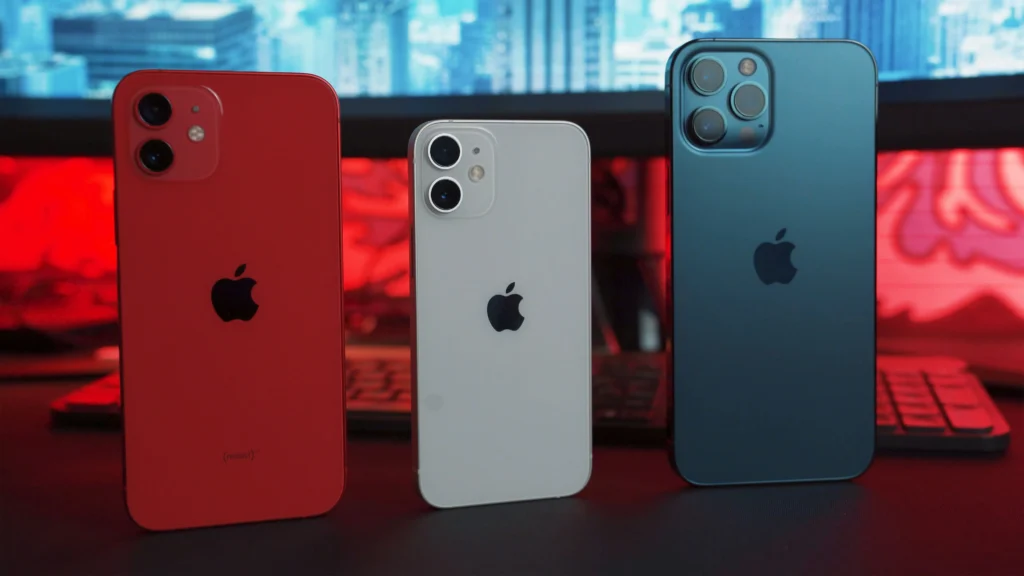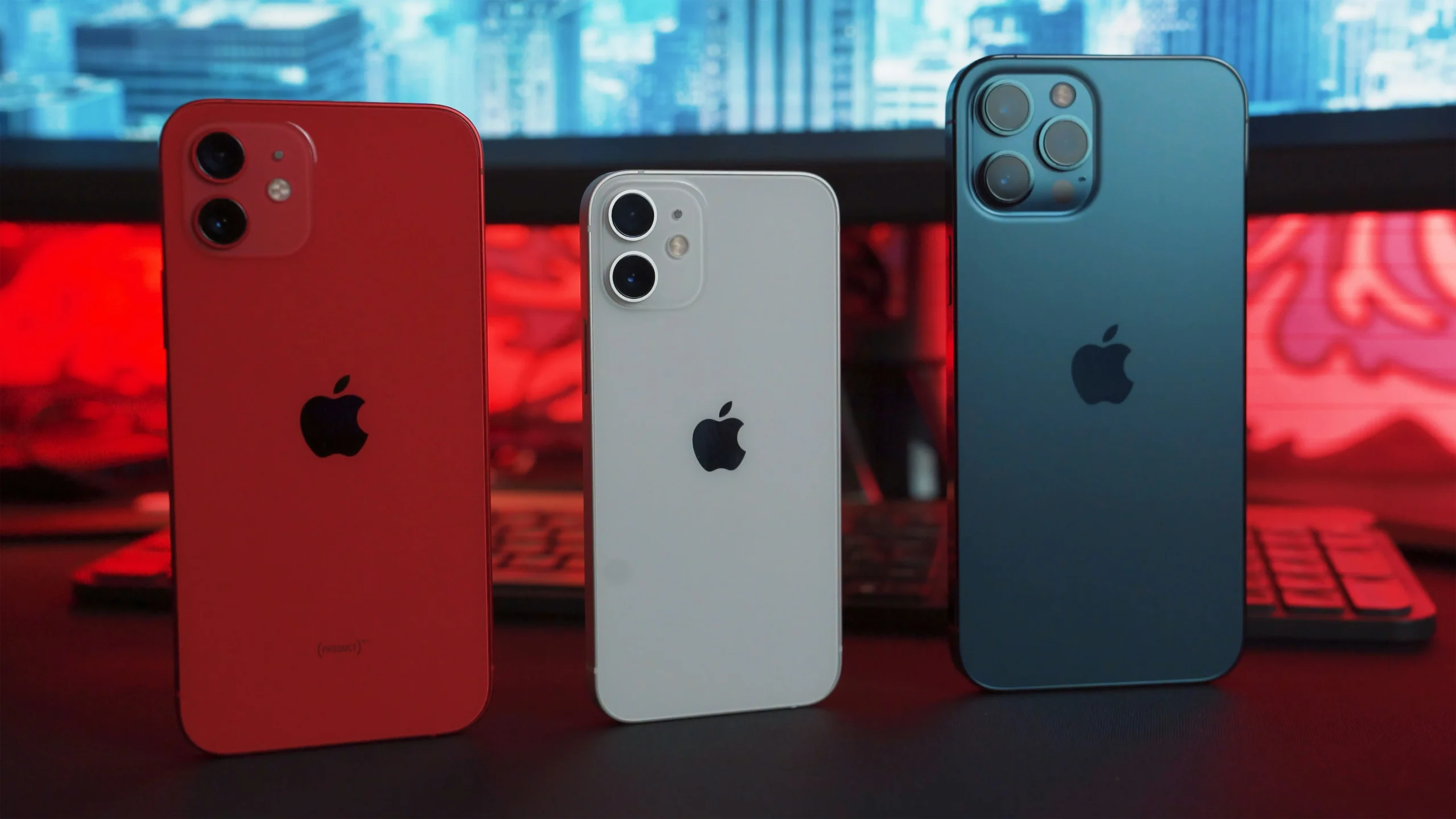
The smartphones landscape in 2025 is set to revolutionize mobile technology, driven by breakthroughs in artificial intelligence (AI), computational photography, and sustainable engineering. As leading manufacturers prioritize on-device AI processing, advanced multi-lens camera systems, and eco-friendly materials, this year’s flagship smartphones promise to deliver unparalleled performance and next-level user experiences. Below, we analyze the most anticipated smartphones of 2025, their innovations, and how they address evolving consumer demands.
Apple iPhone 17 Pro Max: The Pinnacle of AI Integration in Smartphones
Expected Launch: September 2025
Design and Durability
The iPhone 17 Pro Max continues Apple’s tradition of premium smartphone design, rumored to feature a hybrid aluminum-glass back panel. This shift from titanium is expected to reduce the smartphone’s weight while maintaining structural integrity. At just 5.84mm thick, this smartphone will sport a 6.9-inch Super Retina XDR OLED display with a 2,868 × 1,320 resolution and a peak brightness of 3,000 nits, protected by Ceramic Shield 2.0 for superior drop resistance. The redesigned horizontal camera array places a 48MP main sensor, 48MP ultra-wide lens, and a 5x periscope telephoto lens at the center, enabling 10x optical zoom-a first for Apple smartphones.
Performance and AI Capabilities
Powered by the A19 Pro chip (built on TSMC’s 3nm N3E node), this smartphone delivers 35 trillion operations per second (TOPS) for real-time Apple Intelligence tasks, such as generative photo editing and context-aware Siri interactions. The highly efficient Neural Engine supports a 4,755 mAh battery, offering up to 30 hours of video playback-a 20% improvement over previous smartphones. This leap in AI and efficiency positions the iPhone 17 Pro Max as a leader among 2025 moblie pphone.
Camera Innovations
The iPhone 17 Pro Max’s 48MP quad-pixel main sensor leverages Apple’s Fusion Engine for 4K Dolby Vision recording at 120 fps, while the 5x telephoto lens introduces dual-pixel autofocus for sharper zoomed shots. A new Camera Control button provides tactile adjustments for exposure and focus, enhancing the professional photography experience on smartphones.
Software and Ecosystem
iOS 19 brings Apple Intelligence to the forefront of the smartphone experience, offering AI-generated email summaries and prioritized notifications based on geofencing. The Titan M3 chip encrypts all on-device AI processes, reinforcing Apple’s commitment to privacy in its smartphones.
Why It’s Exciting: The iPhone 17 Pro Max merges pro-grade photography with unmatched AI performance, making it the ultimate smartphone for creators and power users.
Samsung Galaxy S26 Ultra: Redefining Android Smartphones
Expected Launch: January 2026
Display and Build
Samsung’s Galaxy S26 Ultra smartphone boasts a 6.9-inch Dynamic AMOLED 2X display with a 3120 × 1440 resolution, 2,600 nits peak brightness, and a 1-120Hz LTPO refresh rate for power efficiency. The titanium frame and Gorilla Glass Armor 2 ensure the smartphone is both durable and stylish. The return of the S Pen slot with Bluetooth connectivity enhances productivity, making this smartphone ideal for professionals.
Performance and AI Enhancements
The overclocked Snapdragon 8 Elite 2 chipset (4nm) pairs with 16GB LPDDR5X RAM, optimizing Galaxy AI features like real-time document translation and adaptive app layouts. The 200MP ISOCELL HP9 main sensor, paired with a 50MP periscope lens (8x optical zoom), uses AI Nightography Pro to capture 24% more light in low-light conditions-an industry-leading feature among smartphones.
Battery and Connectivity
A 5,500 mAh battery supports 45W wired and 15W wireless charging, while Wi-Fi 7 ensures speeds up to 40 Gbps. The Snapdragon X85 modem enables sub-6GHz and mmWave 5G aggregation for seamless connectivity, making this smartphone a powerhouse for multitasking and media consumption.
Why It’s Exciting: The Galaxy S26 Ultra balances professional-grade photography with multitasking prowess, cementing its status as the ultimate Android smartphone.
Google Pixel 10 Pro: AI-Driven Computational Photography in Smartphones
Expected Launch: August 2025
Design and Display
The Pixel 10 Pro continues Google’s focus on minimalist smartphone design. It features a 6.3-inch LTPO OLED display with 3,000 nits brightness and a glossy aluminum frame. Gorilla Glass Victus 2 and an IP69 rating enhance the smartphone’s durability, while the rear camera visor houses a 50MP GN2 main sensor, 48MP ultra-wide lens, and 48MP telephoto lens (5x optical zoom).
Tensor G5 and AI Features
Google’s fully in-house Tensor G5 chip (3nm) delivers 120 TOPS for on-device Gemini Nano tasks, including AI call screening and context-aware reminders. Pixel AI enhances photography with Magic Editor V2, enabling object-aware 4K video edits, and Real Tone Pro for accurate skin tones across 10,000 luminance levels. These AI-driven features place the Pixel 10 Pro at the forefront of smartphones for computational photography.
Battery and Sustainability
A 4,700 mAh battery supports 45W wired and 30W wireless charging, while the smartphone uses 100% recycled aluminum to align with Google’s sustainability goals. This commitment to eco-friendly materials is increasingly important in the 2025 smartphone landscape.
Why It’s Exciting: The Pixel 10 Pro sets a new standard for AI photography, offering seven years of Android updates and quantum-resistant encryption, making it a future-proof smartphone.
OnePlus 15 Pro: Speed and Endurance in Next-Gen Smartphones
Expected Launch: October 2025
Performance and Cooling
The OnePlus 15 Pro smartphone is engineered for speed, with the Snapdragon 8 Gen 4 chipset (4nm) and 24GB LPDDR5X RAM ensuring lag-free gaming. A 9,000mm² graphene vapor chamber keeps the smartphone cool during intense sessions, setting a new benchmark for gaming smartphones.
Camera and Charging
Hasselblad’s triple-camera system includes a 50MP LYT-808 main sensor, 50MP ultra-wide lens, and 32MP telephoto lens with AI Motion Detection for crisp action shots. A 6,000 mAh battery charges fully in 36 minutes via 100W SUPERVOOC, with 80% capacity retention after 1,600 cycles-an endurance record among smartphones.
Why It’s Exciting: The OnePlus 15 Pro dominates in speed and endurance, catering to gamers and multitaskers who demand the best from their smartphones.
Xiaomi 16 Ultra: Flagship Smartphone Power, Mid-Range Pricing
Expected Launch: December 2025
Display and Design
The Xiaomi 16 Ultra smartphone features a 6.8-inch WQHD+ AMOLED panel with 3,200 nits brightness and 1.2mm bezels via LIPO technology, achieving a 94% screen-to-body ratio. The ceramic back and aluminum frame house a quad-camera system, including a 200MP periscope telephoto lens (5x optical zoom), making this smartphone a camera powerhouse.
Performance and Battery
Snapdragon 8 Elite 2 and 24GB RAM drive Xiaomi HyperAI features, while the 7,000 mAh silicon-carbon battery supports 120W wired charging (19-minute full charge). These specs make the Xiaomi 16 Ultra one of the most powerful and efficient smartphones available at a competitive price.
Why It’s Exciting: Xiaomi 16 Ultra delivers flagship smartphone specs at a mid-range price, challenging premium rivals and making high-end features more accessible.
Comparative Analysis of 2025 Flagship Smartphones
| Parameter | iPhone 17 Pro Max | Galaxy S26 Ultra | Pixel 10 Pro | OnePlus 15 Pro | Xiaomi 16 Ultra |
|---|---|---|---|---|---|
| Chipset | A19 Pro (3nm) | Snapdragon 8 Elite 2 | Tensor G5 (3nm) | Snapdragon 8 Gen 4 | Snapdragon 8 Elite 2 |
| RAM/Storage | 12GB/1TB | 16GB/1TB | 16GB/1TB | 24GB/1TB | 24GB/1TB |
| Main Camera | 48MP (1/1.28″) | 200MP (1/1.3″) | 50MP (1/1.12″) | 50MP (1/1.4″) | 200MP (1″) |
| Zoom | 5x optical, 30x digital | 8x optical, 100x digital | 5x optical, 30x digital | 3x optical, 60x digital | 5x optical, 120x digital |
| Battery | 4,755 mAh | 5,500 mAh | 4,700 mAh | 6,000 mAh | 7,000 mAh |
| Charging | 30W wireless | 45W wired | 45W wired | 100W wired | 120W wired |
| Price | $1,299 | $1,399 | $1,099 | $899 | $799 |
Emerging Trends in 2025 Smartphones
- AI Everywhere: On-device LLMs like Gemini Nano enable real-time translation and adaptive UI layouts, making smartphones smarter and more intuitive.
- Sustainable Materials: Apple’s recycled aluminum and Google’s plastic-free packaging are setting new standards for eco-friendly smartphones.
- Thermal Innovations: Graphene vapor chambers improve heat dissipation by 15% in gaming smartphones, ensuring sustained performance.
- Display Advancements: LTPO 3.0 panels achieve 3,200 nits brightness with circadian rhythm protection, enhancing the viewing experience on smartphones.
- Foldable Smartphones: Foldable smartphones are becoming mainstream, offering new multitasking possibilities and portability.
Conclusion: Choosing Your 2025 Flagship Smartphone
- Content Creators: iPhone 17 Pro Max for 4K Dolby Vision videography and AI-powered editing.
- Multitaskers: Galaxy S26 Ultra with S Pen and DeX desktop integration, the most versatile smartphone for productivity.
- AI Enthusiasts: Pixel 10 Pro for Gemini-powered computational photography, leading the way in AI smartphones.
- Gamers: OnePlus 15 Pro with a 144Hz display and 100W charging, the ultimate gaming smartphone.
- Value Seekers: Xiaomi 16 Ultra offering Leica optics and flagship features at half the premium mobile phone price.
In 2025, smartphones are not just communication tools-they are AI companions, creative studios, and productivity hubs. With each flagship smartphone pushing the boundaries of what’s possible, consumers can expect smarter cameras, longer battery life, and more sustainable choices. Whether you’re a creator, gamer, professional, or value seeker, the 2025 smartphone lineup has something extraordinary to offer.
👉Related Article: Samsung Galaxy Z Fold 7: Ultimate First Look, Features, and Why It Could Be the Best Foldable Yet











